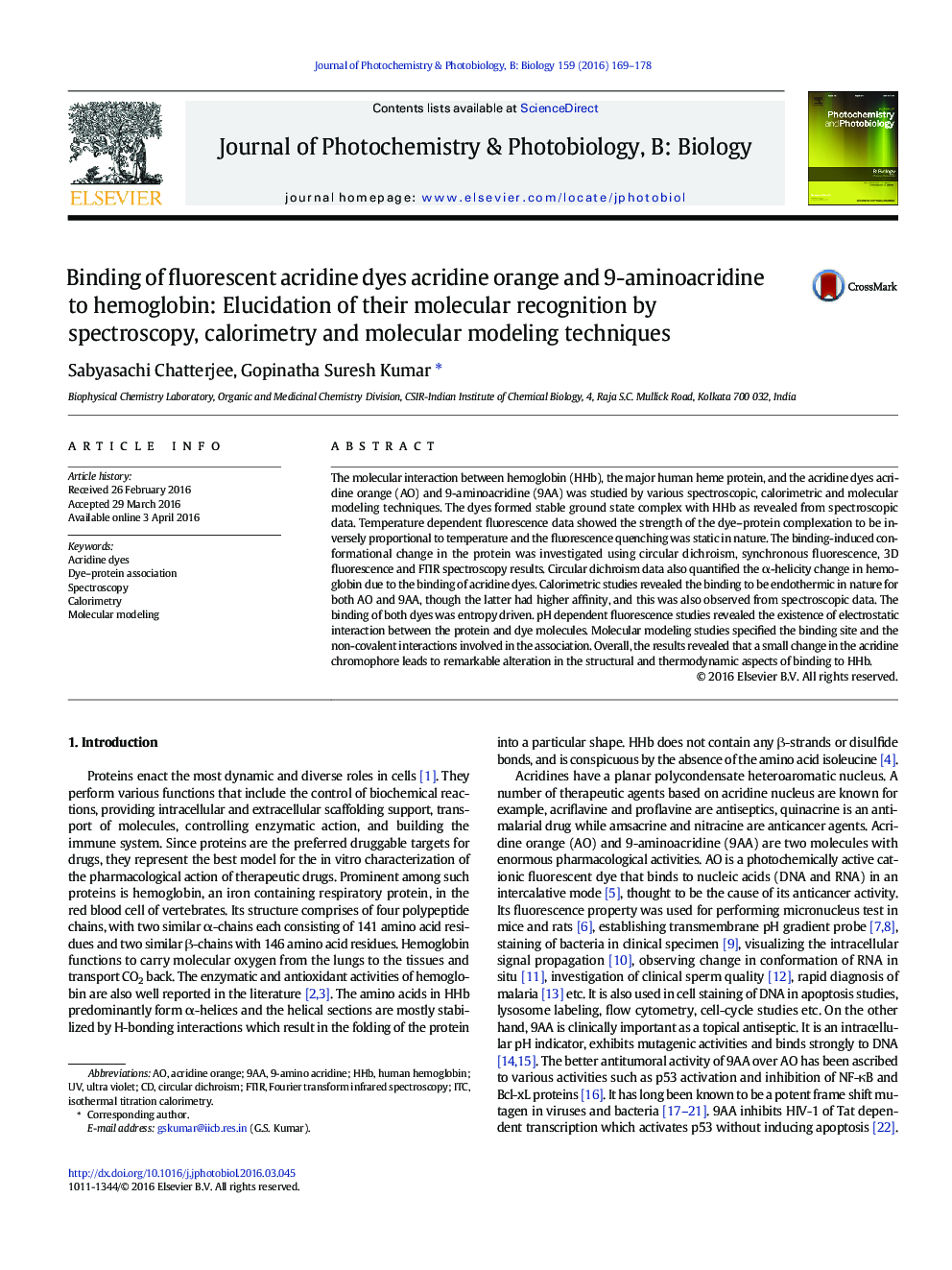| کد مقاله | کد نشریه | سال انتشار | مقاله انگلیسی | نسخه تمام متن |
|---|---|---|---|---|
| 29488 | 44411 | 2016 | 10 صفحه PDF | دانلود رایگان |
• Acridine orange and 9-amino acridine bind hemoglobin strongly.
• Conformational changes in the protein occurred on binding.
• The binding was endothermic in both cases, driven by entropy changes.
• Molecular modeling study confirms the site of interaction on hemoglobin.
• A small structural change in the chromophore leads to large effects in protein binding.
The molecular interaction between hemoglobin (HHb), the major human heme protein, and the acridine dyes acridine orange (AO) and 9-aminoacridine (9AA) was studied by various spectroscopic, calorimetric and molecular modeling techniques. The dyes formed stable ground state complex with HHb as revealed from spectroscopic data. Temperature dependent fluorescence data showed the strength of the dye–protein complexation to be inversely proportional to temperature and the fluorescence quenching was static in nature. The binding-induced conformational change in the protein was investigated using circular dichroism, synchronous fluorescence, 3D fluorescence and FTIR spectroscopy results. Circular dichroism data also quantified the α-helicity change in hemoglobin due to the binding of acridine dyes. Calorimetric studies revealed the binding to be endothermic in nature for both AO and 9AA, though the latter had higher affinity, and this was also observed from spectroscopic data. The binding of both dyes was entropy driven. pH dependent fluorescence studies revealed the existence of electrostatic interaction between the protein and dye molecules. Molecular modeling studies specified the binding site and the non-covalent interactions involved in the association. Overall, the results revealed that a small change in the acridine chromophore leads to remarkable alteration in the structural and thermodynamic aspects of binding to HHb.
Figure optionsDownload as PowerPoint slide
Journal: Journal of Photochemistry and Photobiology B: Biology - Volume 159, June 2016, Pages 169–178
